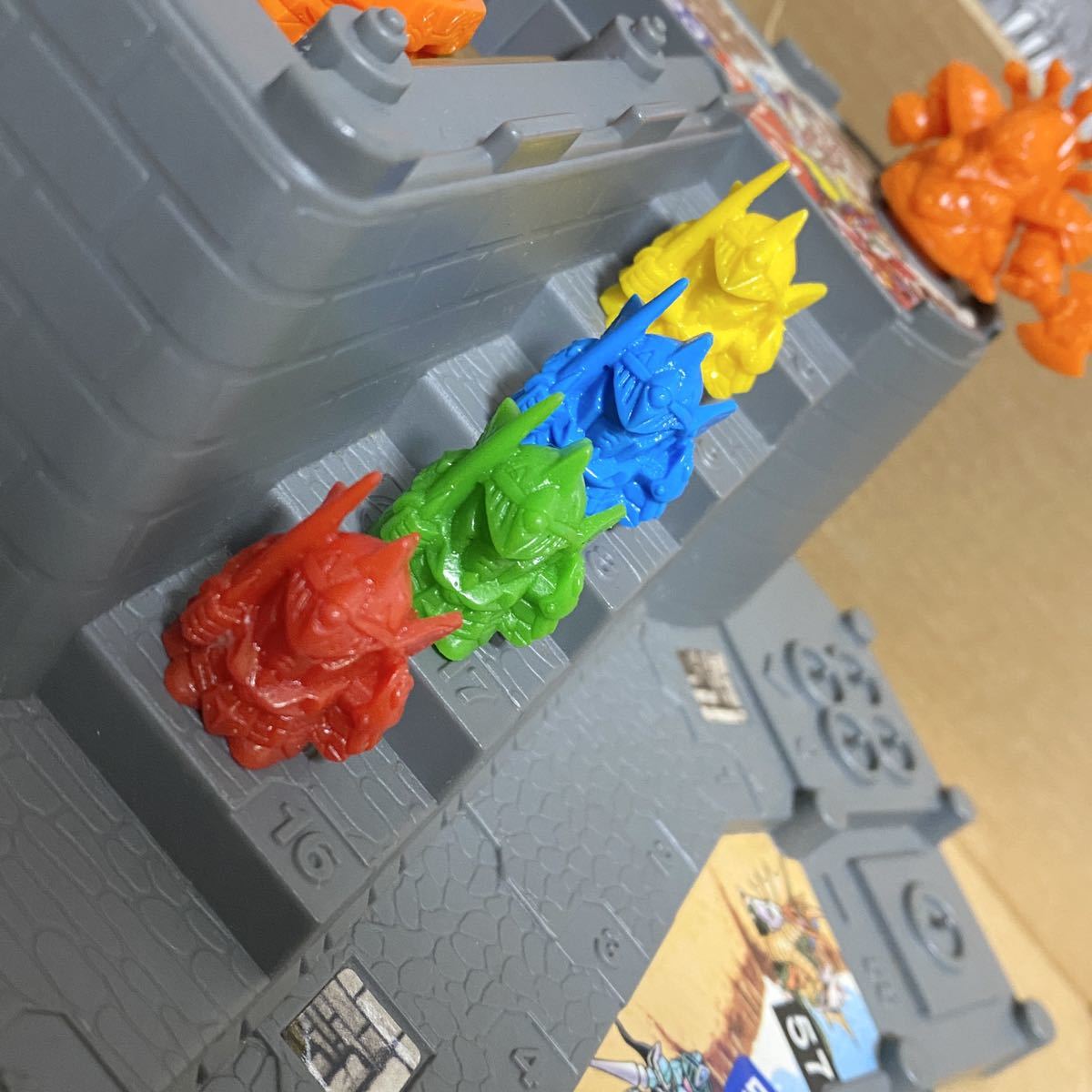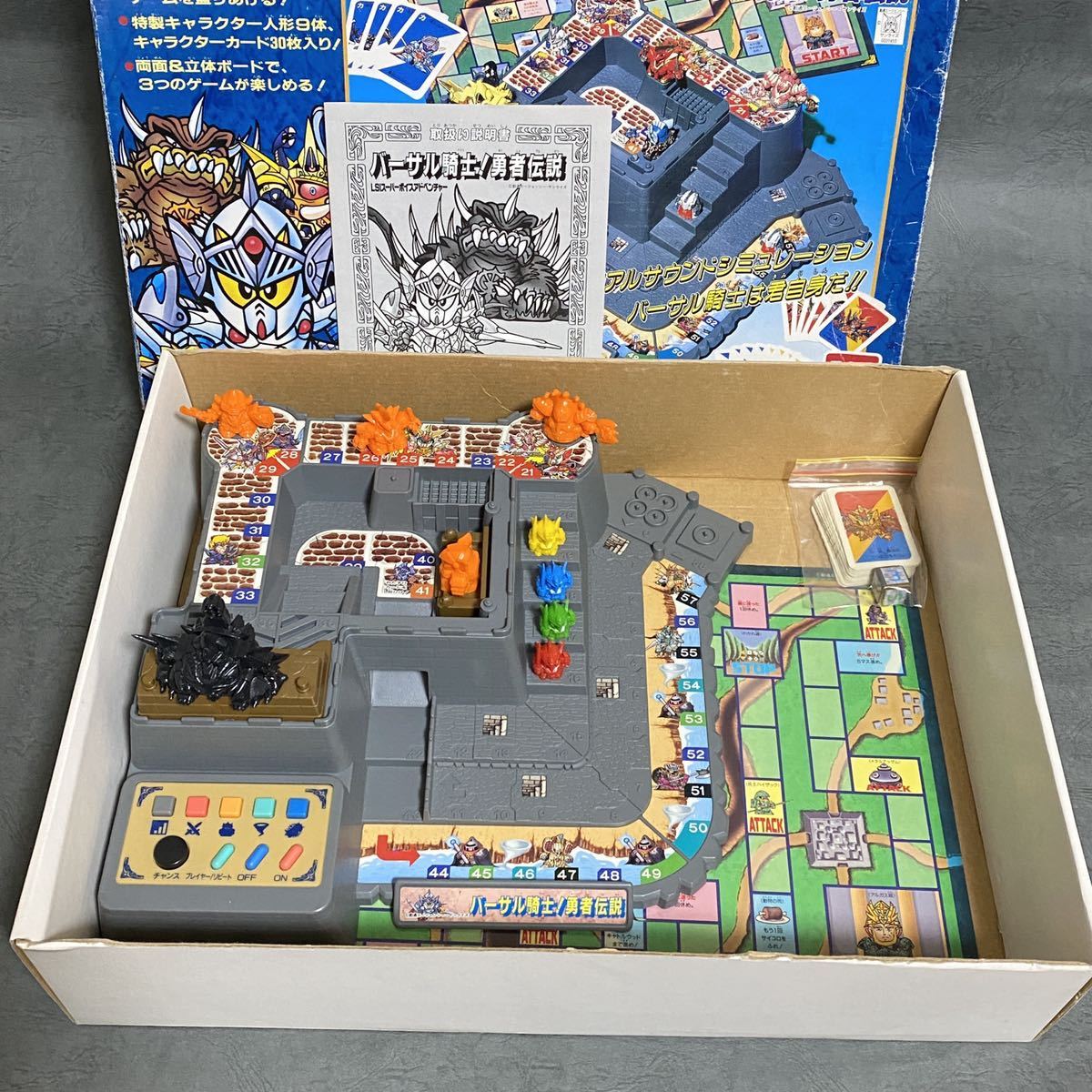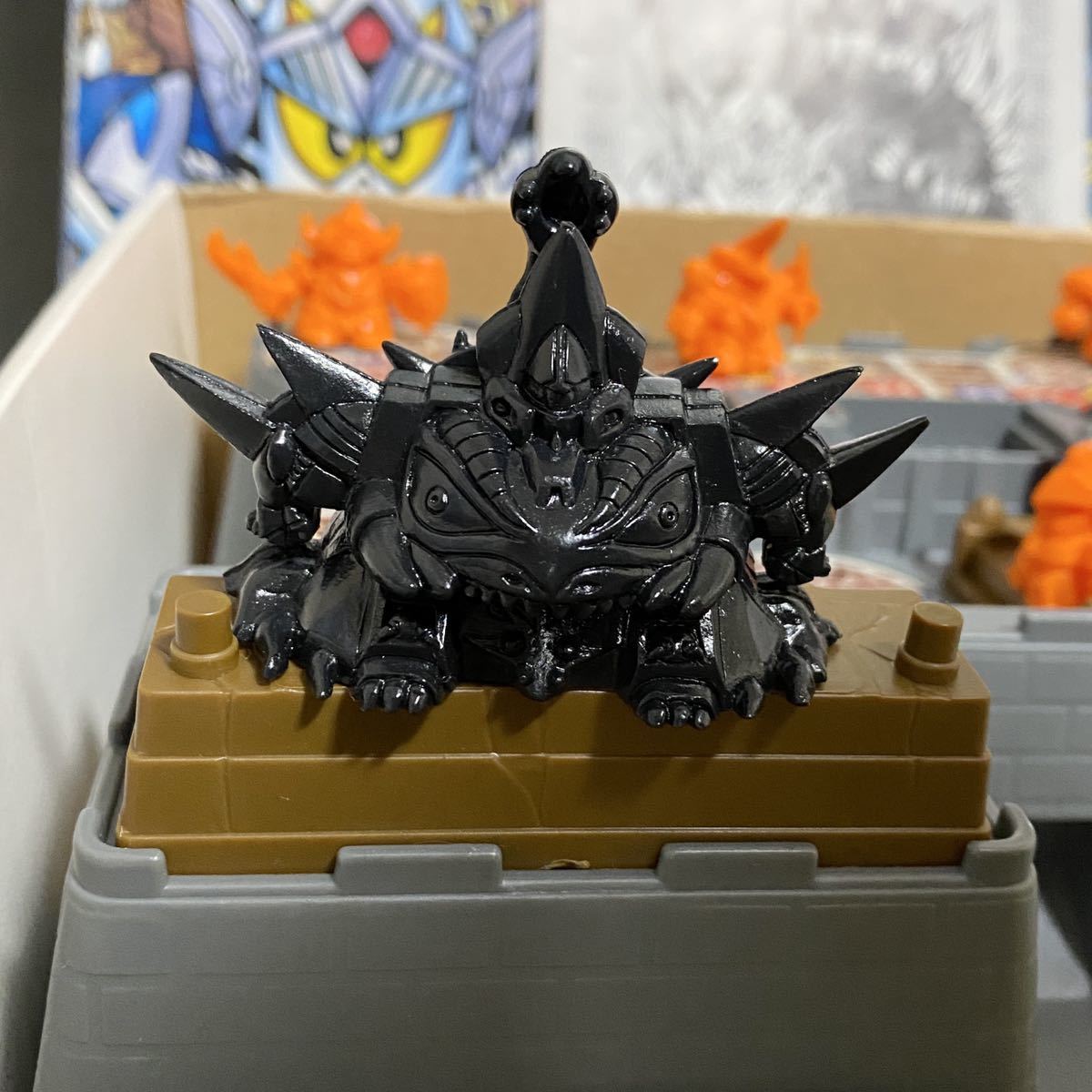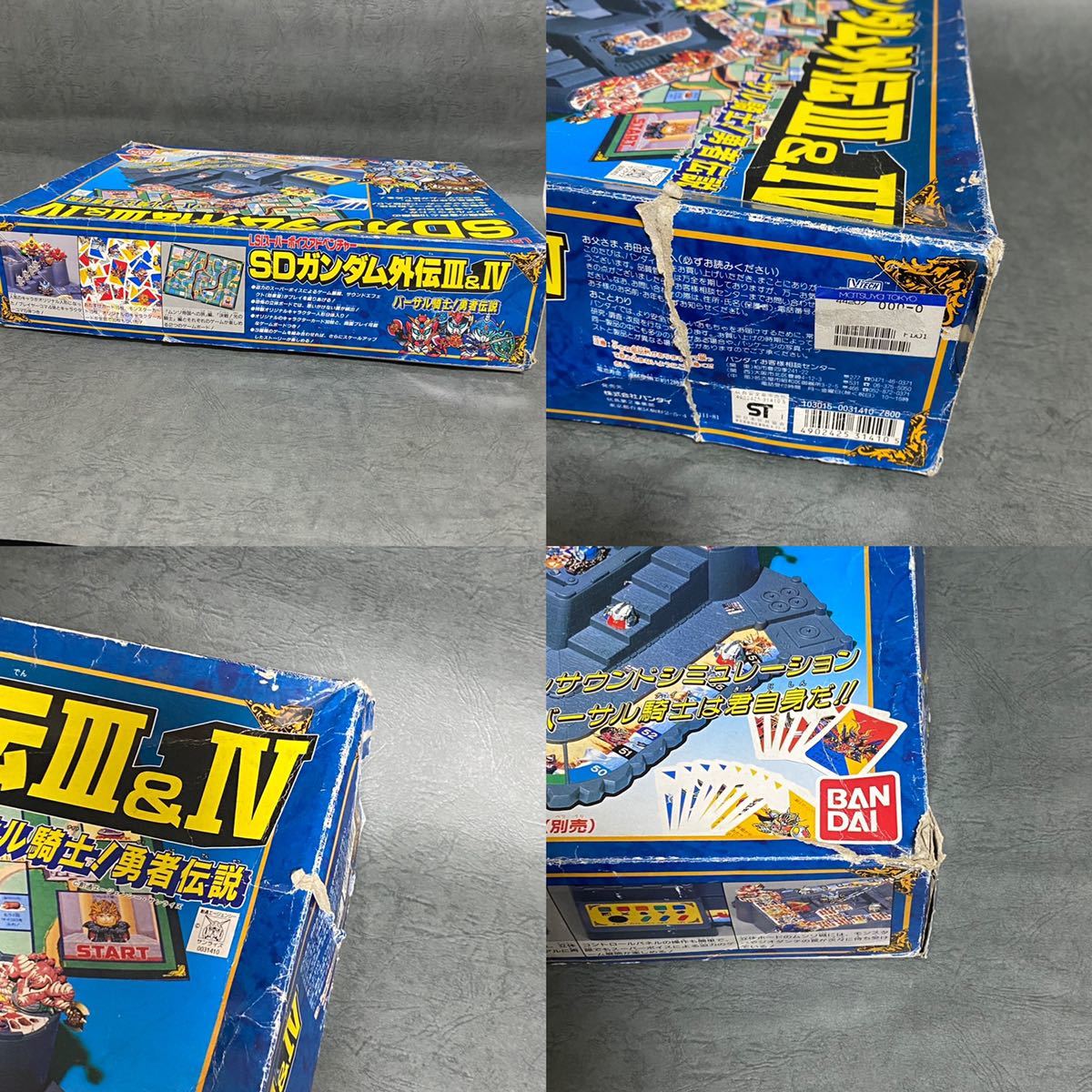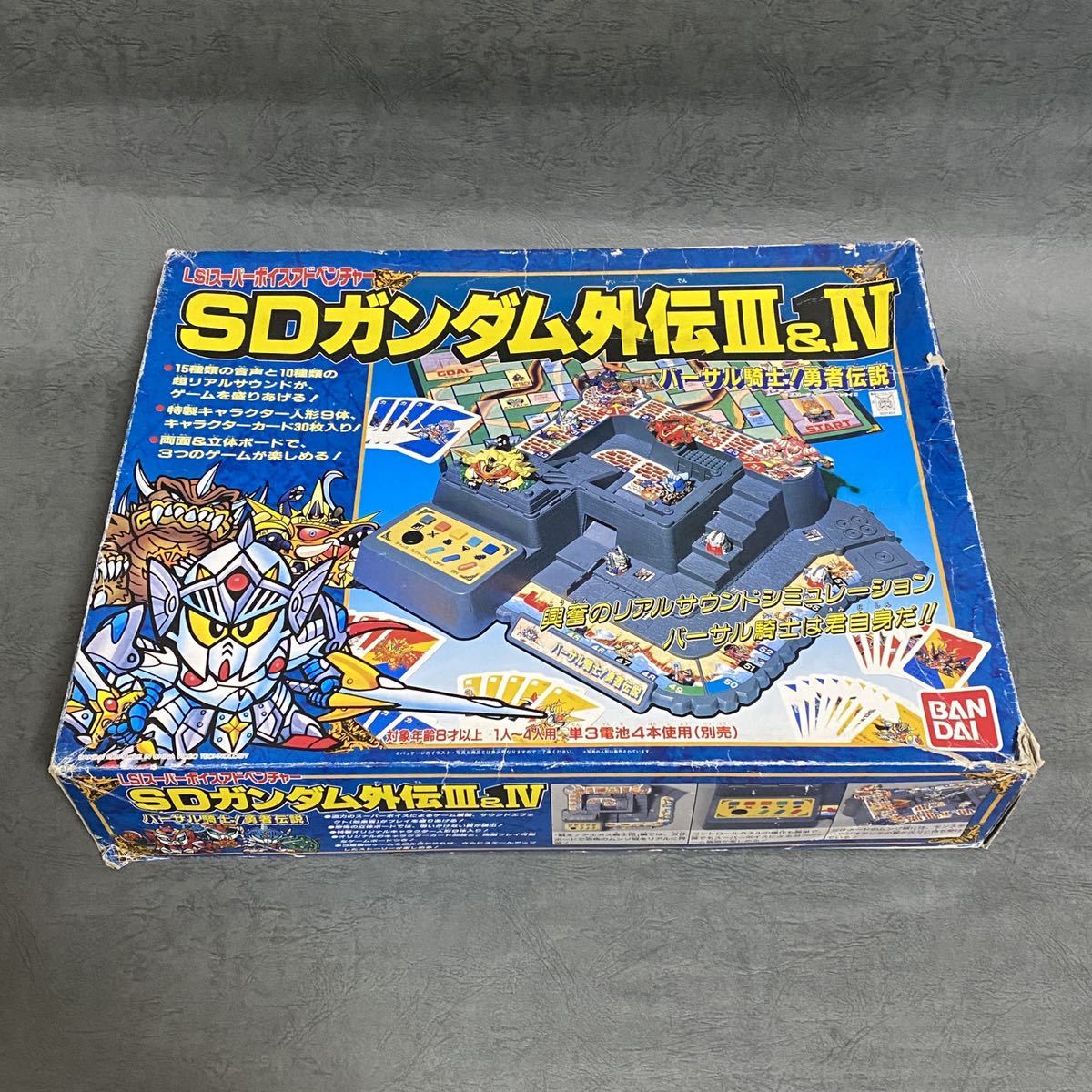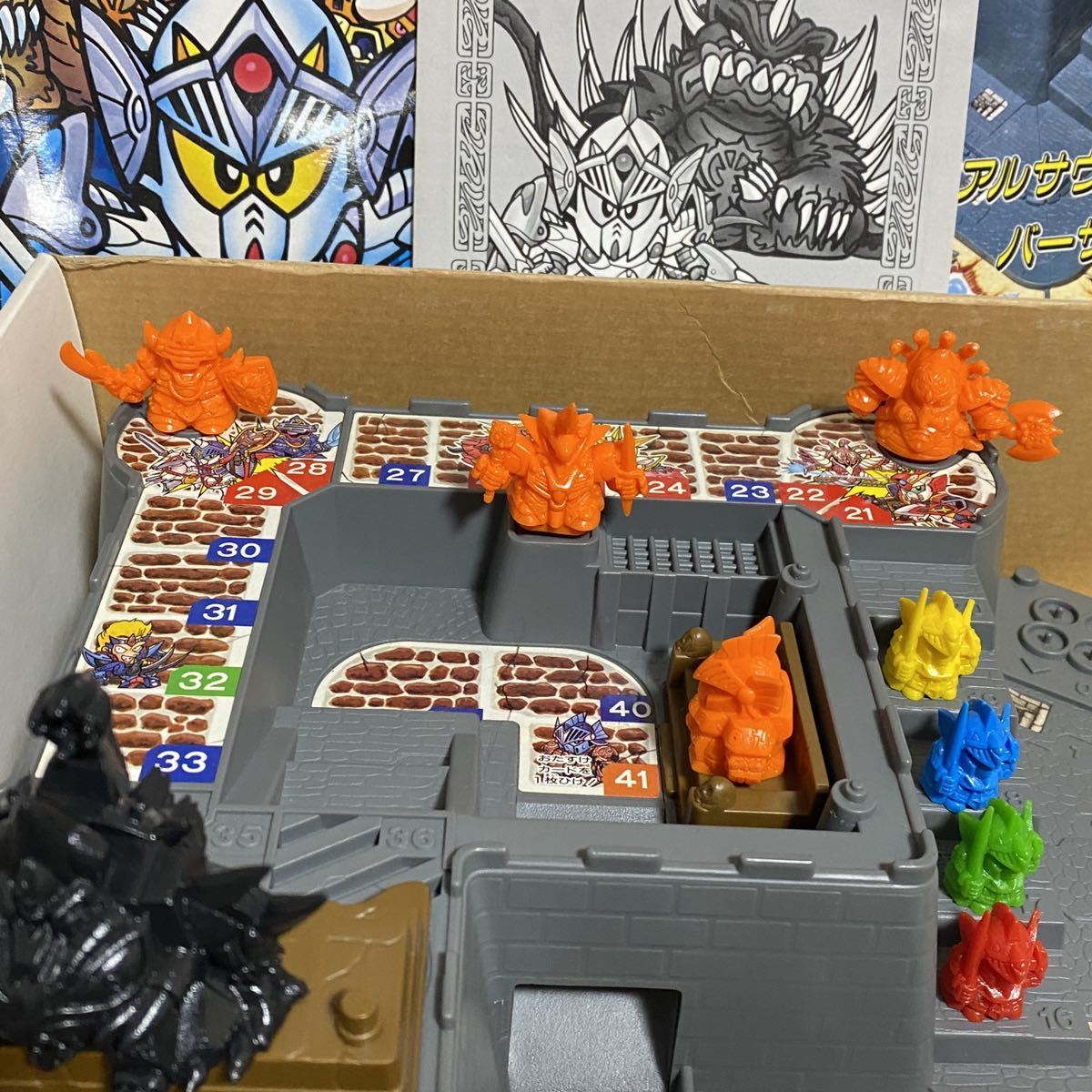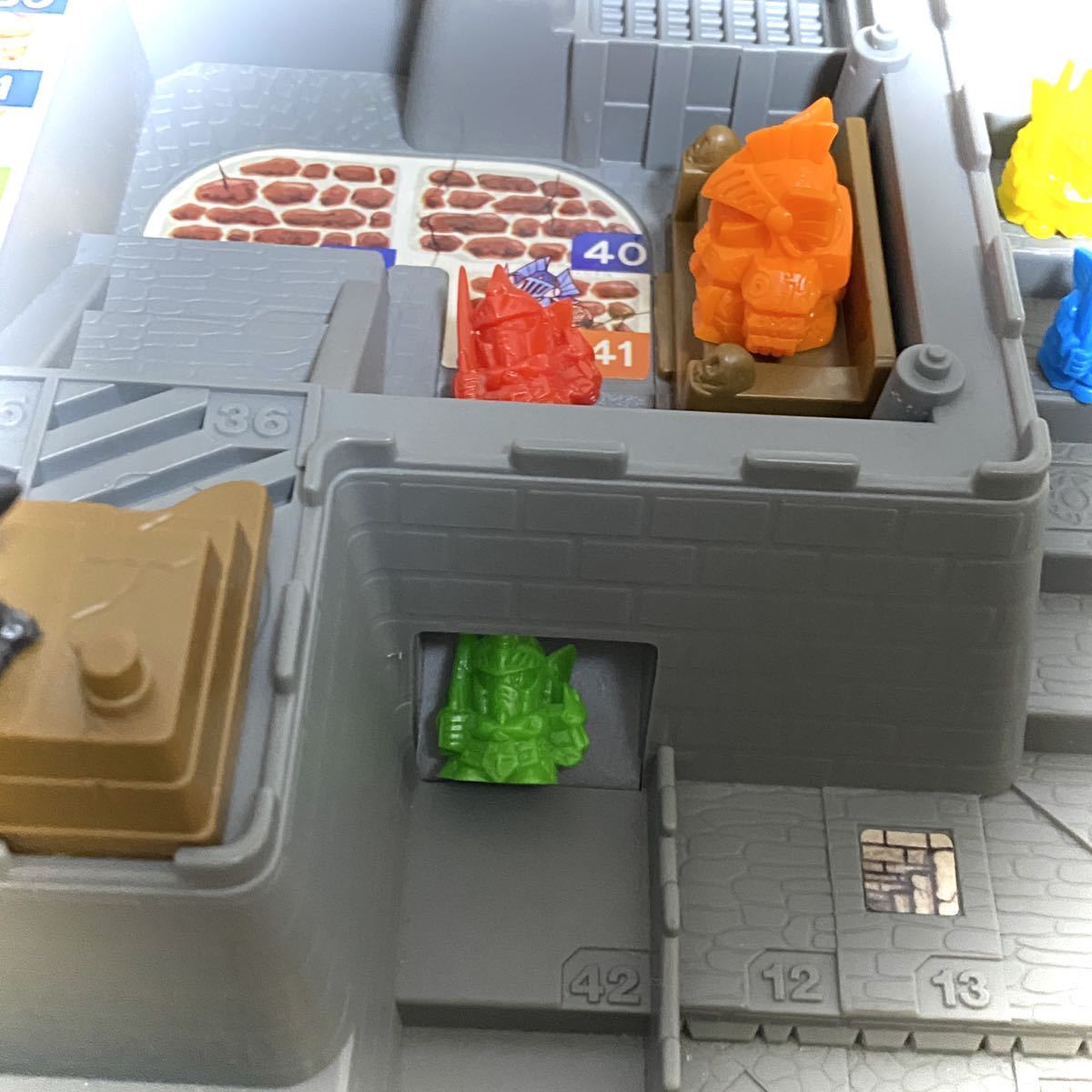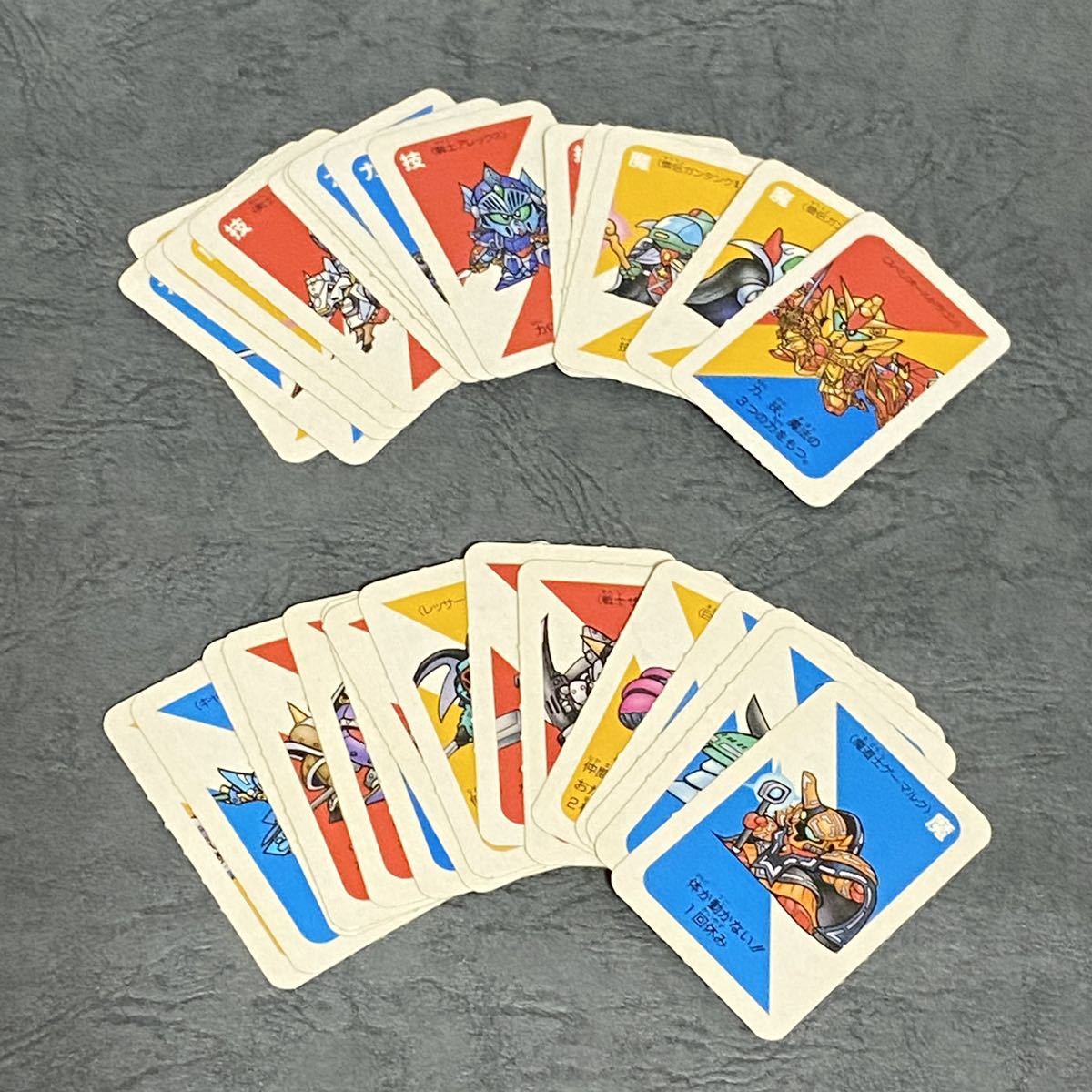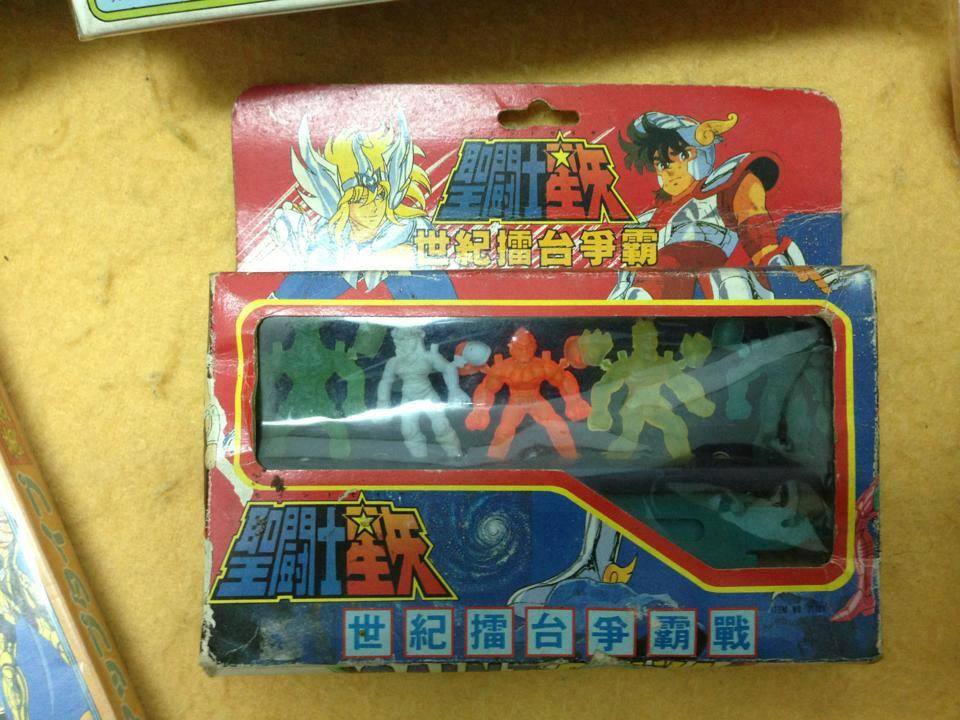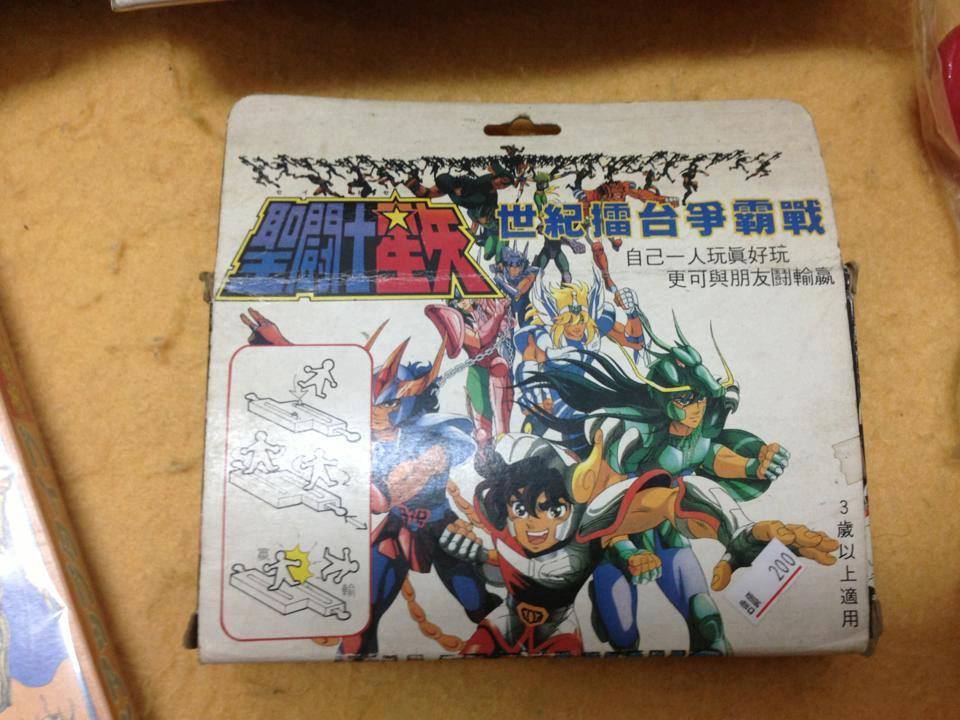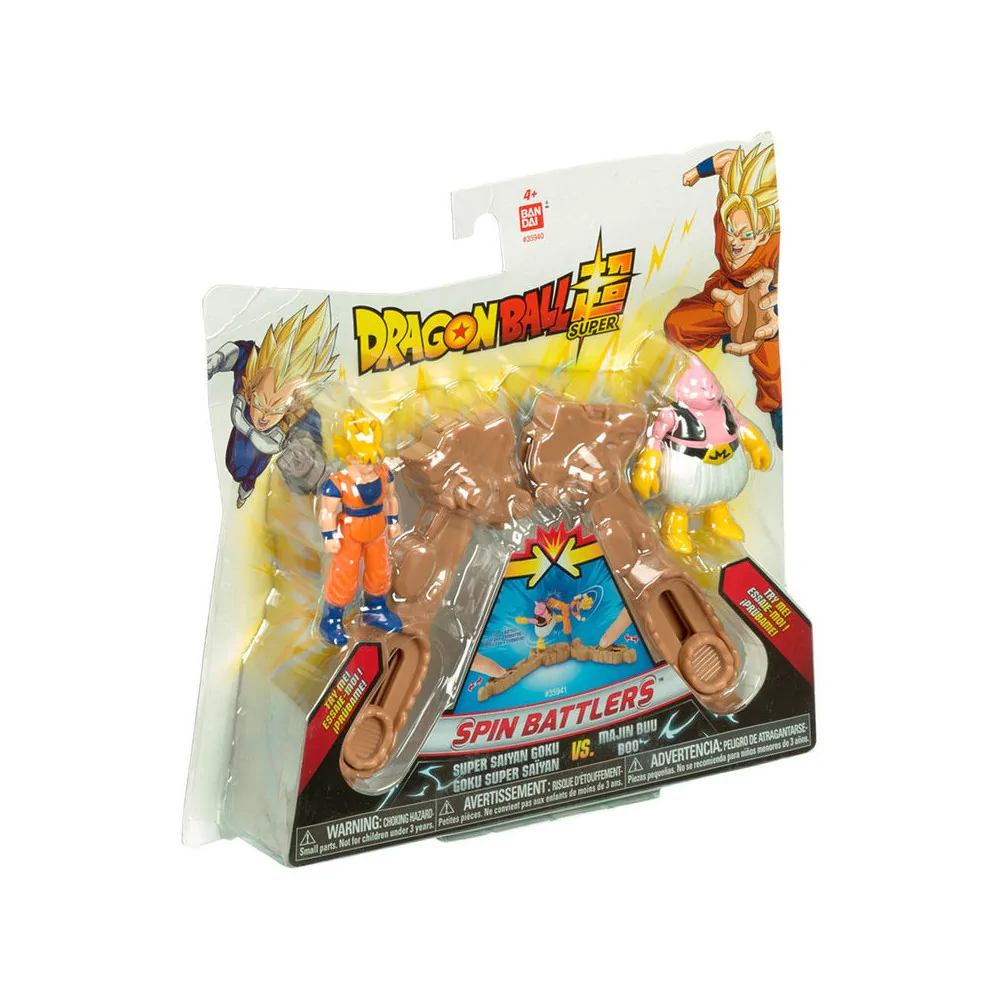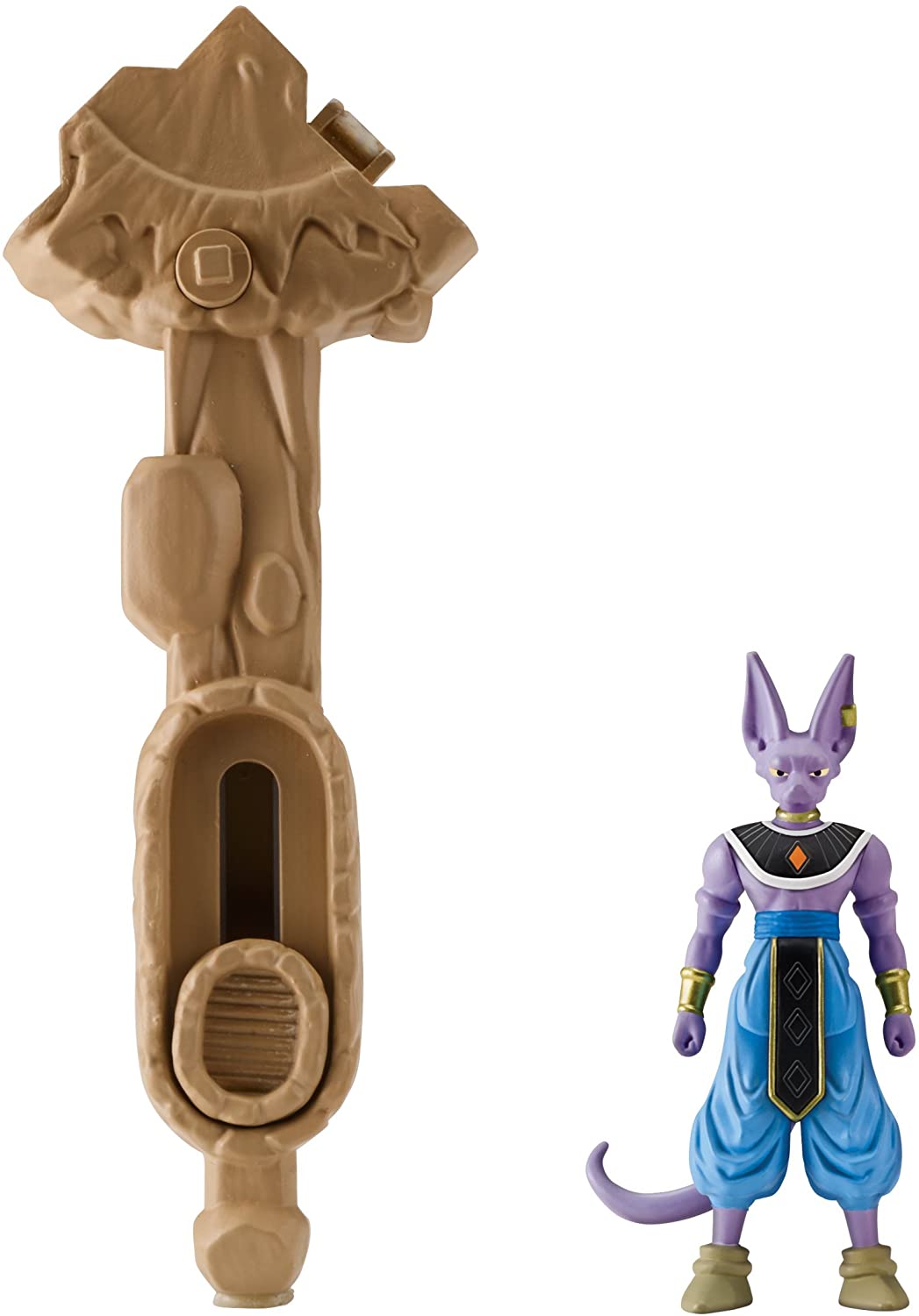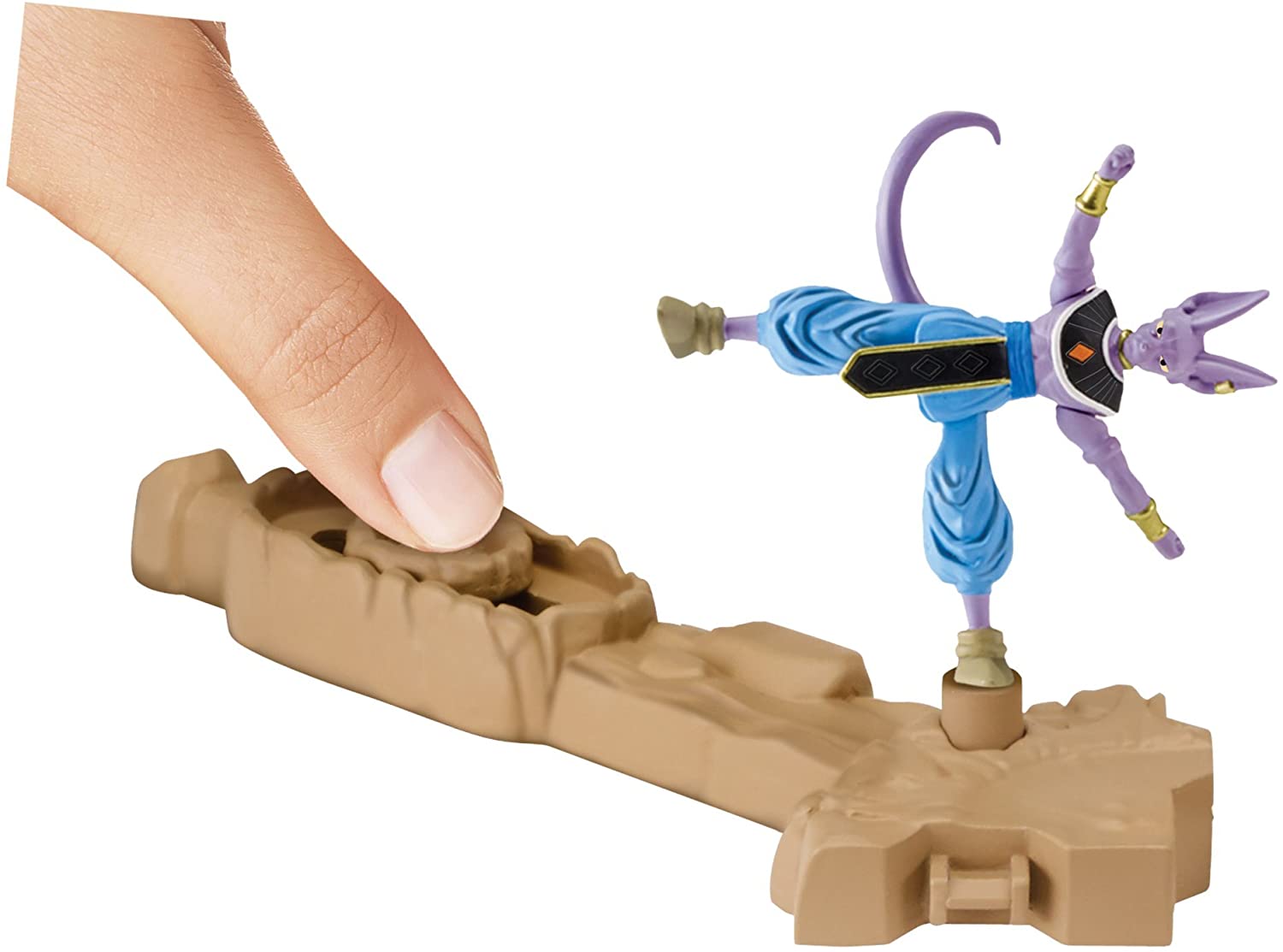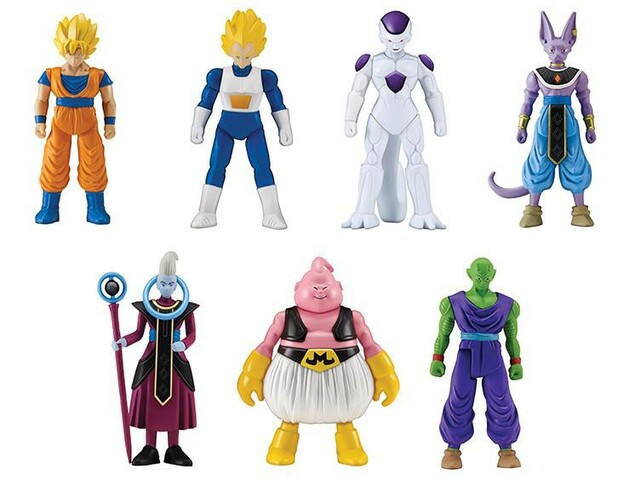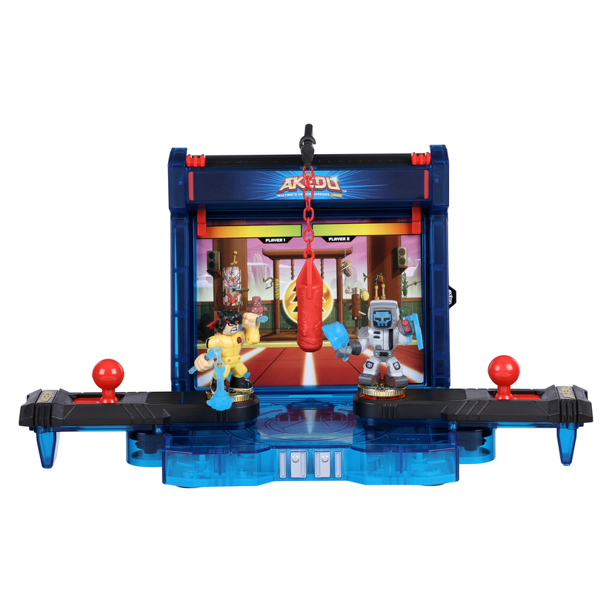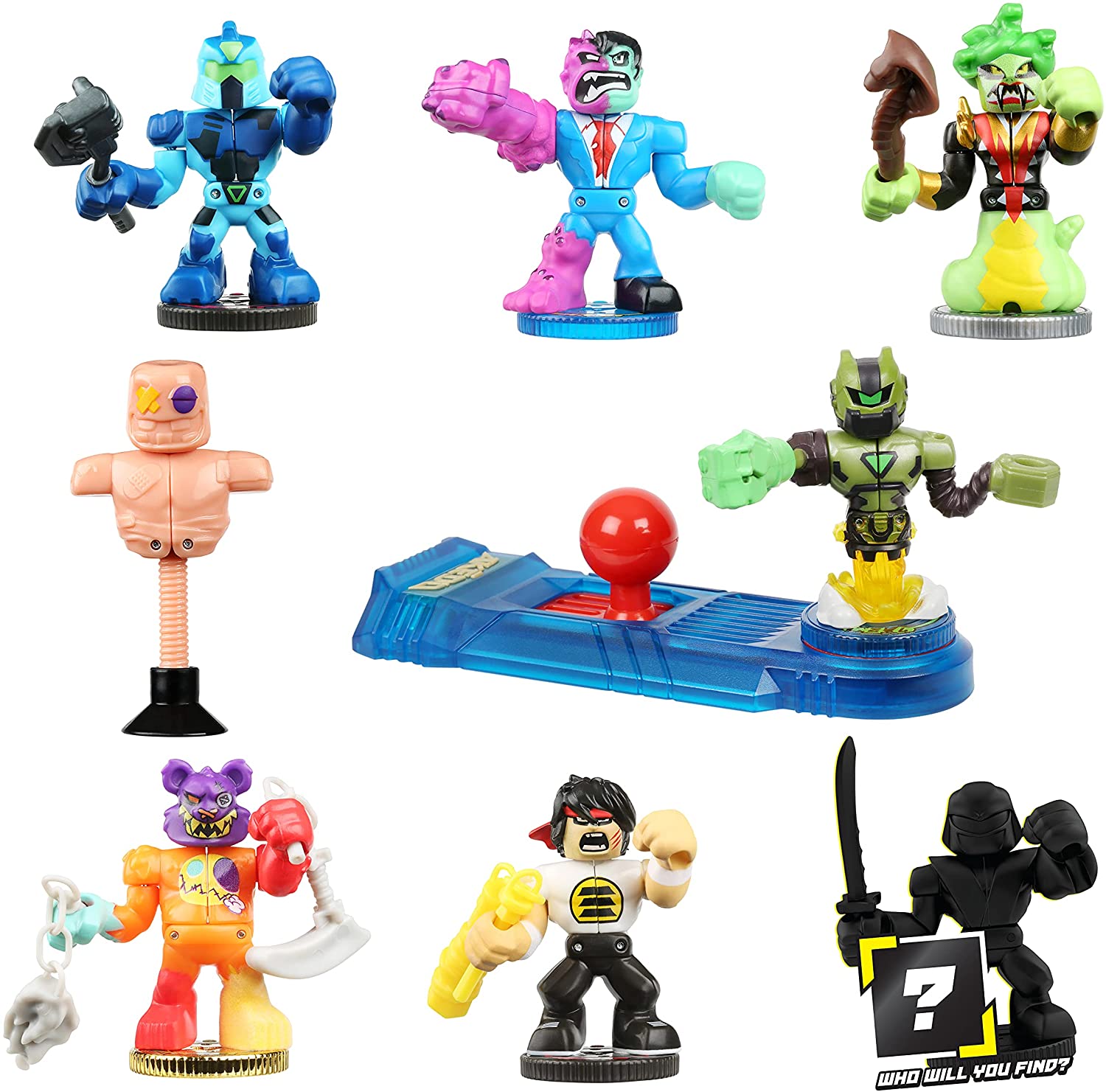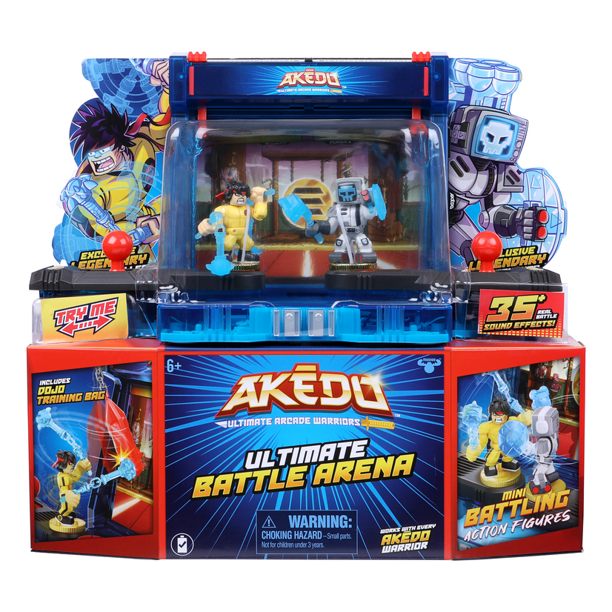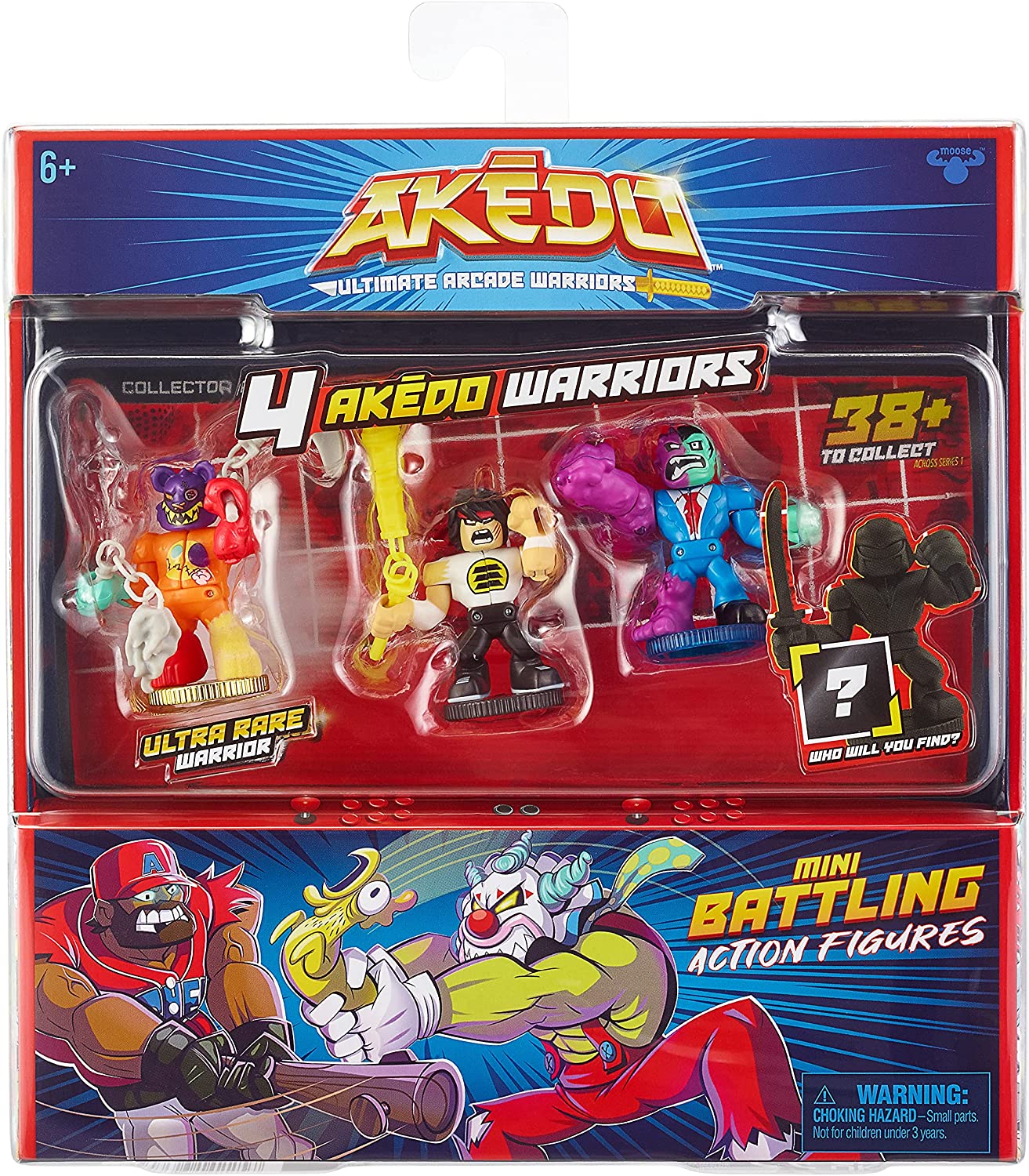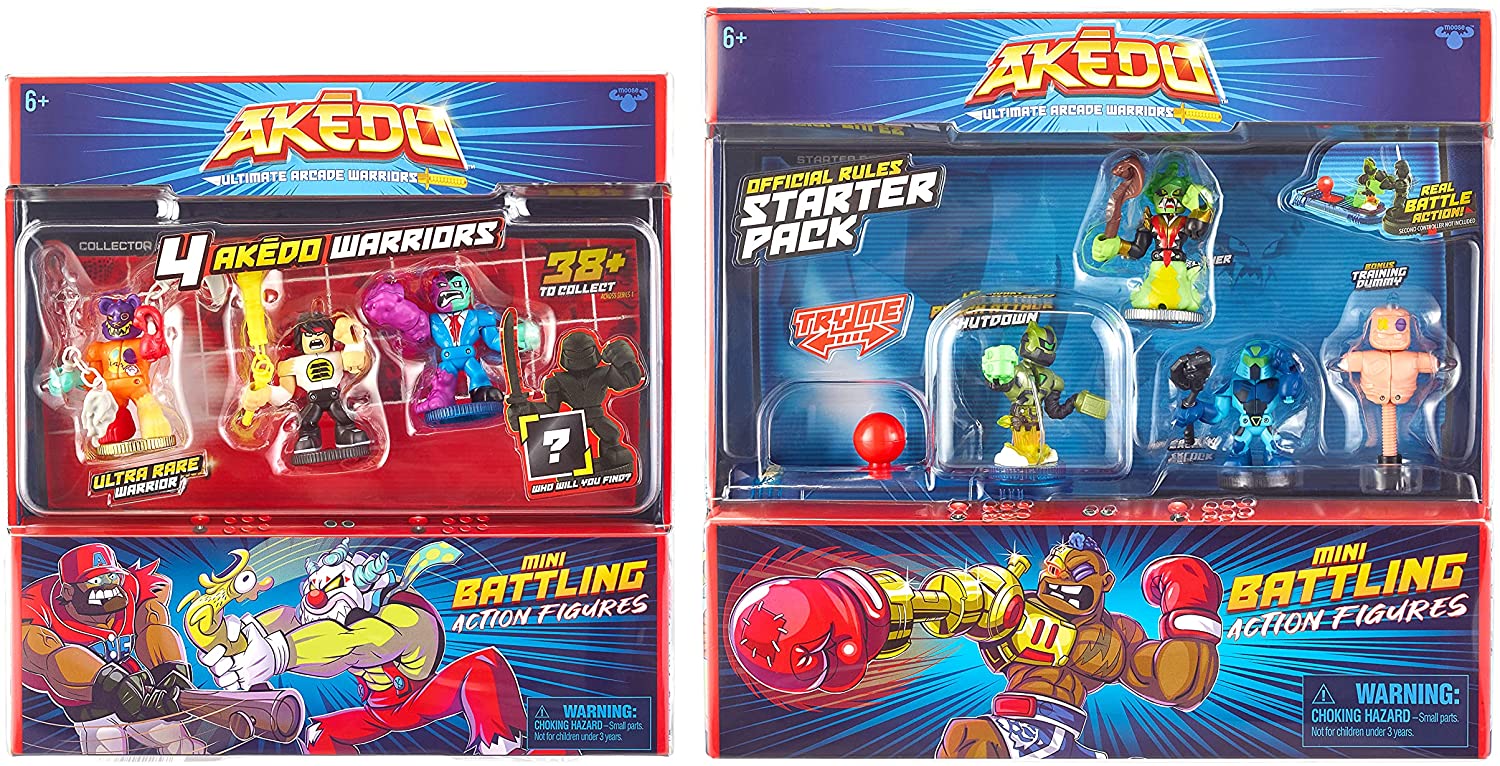Shanghai Art and Design Academy (SADA) has visited us for the 2nd time! Besides formal meetings on possible collaborations between the two schools, I designed a condensed workshop on conservation UX/UI design for their students. With the support of my dear teaching assistants, Chiehping and Qihui, we are able to eliminate coding completely and focus on storyboarding, designing, testing, and iterating in the workshop. They visited my thesis class and had some “meaningful” exchanges there, and they also participated NYC Media Lab’s Explore Future Reality conference and had a blast there too. We also invited Wei Wei, our dear friend from Bell Labs, to round up their action-packed 4 days with a sincere but Michael Bay style talk (lots of mind explosions). The ending was emotional and mixed with slow internet, hot pizzas, soda pops, and some passive-aggressive chatbots… That’s it! Thanks for visiting us, I will see you all on wechat!
Category: Uncategorized
Pikachu attack!
Got a Battle-Ready Pikachu a while ago, opened it up many times and was fascinated by the internal design. There might be budget reason involved because the trigger that sends the foam disc into the shooting mechanism was not motorized. The player has to pull Pikachu’s left ear which connects to a leveler that pushes the foam disc out. The desire to mod it had grown stronger in my head, finally found time for it. First thing first, replace the ear trigger with a servo. I 3D printed a servo mount and connected the servo handle to the leveler. It worked out nicely.
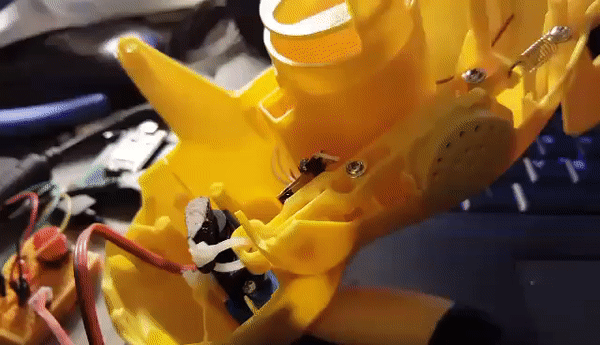
Next, use a motor shield to take over the motor for shooting mechanism as well.
I adopted this tutorial on Adafruit.com and switched the tech base to feather LE Bluetooth. I was looking for a LE platform that is easy to work with. By that I meant less low-level coding for the sake of rapid prototyping. Everything worked out in 1 try, can’t ask more than this.
I am now playing with Adafruit’s controller app and trying to make an app myself so I can incorporating voice control in the future. Who doesn’t want to make “Pikachu, I choose you!” and “Pikachu, attack!” a reality! I might also switch the tech base to Raspberry Pi, since I already have a working voice controlled platform built up on it.
Fabcafe Tokyo 2016 Bonenkai
Last week I was invited to judge an influential maker competitions in Tokyo. Recently, I have been pushing meaningful content creation in VR/AR/MR at Parsons and trying to emphasis coding as a way of digital fabrication, and advocate for code support across the school. This trip has further confirmed these ideas on an international level. Thanks so much for having me!!
I arrived two days earlier and participated Fabcafe Tokyo’s 2016 Bonenkai as one of the speakers. Each of us get to pick 4 words that inform the future of making. It was a fun, inspiring, and highly informative night with a community of great makers based in Tokyo – Hiroya Tanaka from Keio University, Pieter Franken who founded Safecast, Tim Wong from Fabcafe Taipei, and many more.
The four words that I came up with were “IoT”, “Holodeck”, “Zero GUI”, and “Mixed Intelligent”. Here are reasons behind choosing these words based on my fading memories:
IoT: with all the new, modular, prototype driven IoT kits available in the market right now, it makes it easier to incorporate new functionalities into one’s making. Makers can achieve high-level of wireless connectivity and interactions without in-depth knowledge in electronics.
Holodeck: Inspired by Star Trek and the recent success of Tilt Brush by Google, the idea of virtual makerspace is finally coming to live. With a proper pipeline that connects the digital and physical making, the holodeck could bring the embodied making to the next level.
Zero GUI: This is a follow up to the Holodeck idea, in order to bring the virtual and embodied making experience to the level where the quality of outcome is ensured, we as makers would have to reinvent the way we interact with digital tools, especially in an immersive digital space where the tradition understanding of UX/UI has become obsolete.
Mixed Intelligence: Many of the digital fabrication pipelines today, makers are collaborating with computer algorithms in one way or another. This idea of writing instructions and have the 3rd party (humans or machines) execute or visualize these instructions can be traced back to Sol Lewitt’s drawing series in late 1960s. With all the advancement in Artificial Intelligence, or works done around bio art with living tissues, the idea of collaborating with other types of intelligence in the process of making will be a norm in the future of making.
I also spent 2 hours in Akihabara and it completed the trip for me.
MR Mechanic Study: Frog Life – Tongue Controller
“Comfortably lying on a couch in any position you want, stripping a Cardboard VR on your face, bearing your arms behind your head, and let your tongue take over all the snapping, just like a hungry frog boss.”
Here comes my next experiment. The tongue controller is already working, the player has to reach his/her tongue out and touch the controller, and it will register a hit in the game. The feedback, SFX and Visual, has to be satisfying to make it a worthwhile experience.

Makey Makey Go is able to simulate a touch easily with just 1 contact (capacitive touch), in this case, it is the player’s tongue. This setup will require a USB adaptor from Makey Makey Go to the android phone.
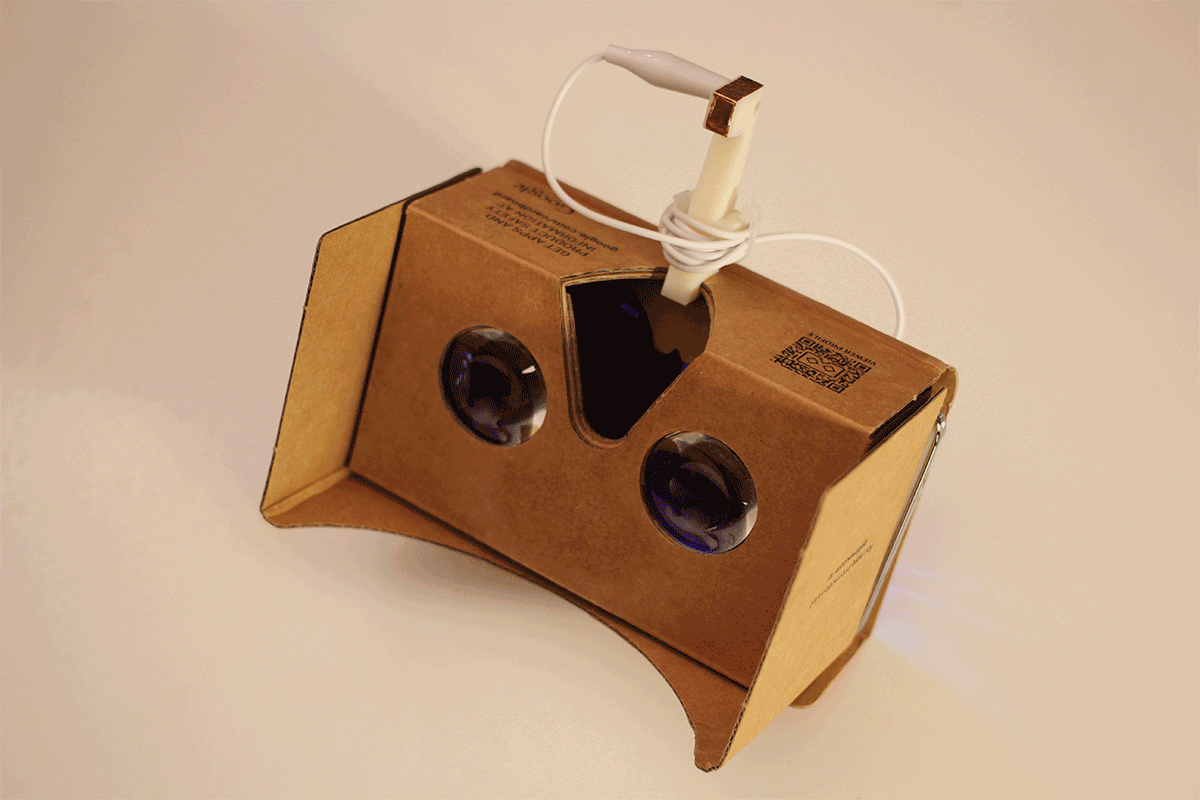
[2020] The Frogworld VR on Steam will be a perfect game for this interface.
https://store.steampowered.com/app/1379350/Frogworld/
VR Pokemon Battle: Wild Fulu Monkey (野生福祿猴)
The design of the main lantern of this year’s Taiwan Lantern Festival has gone viral on Taiwanese social media recently. The comments were mostly negative in the beginning due to the over-all provocative aesthetic that is drastically different from the previous main lanterns. It was courageous for the designer to risk for a chance of innovation but it seems like his artist side took over the design process and left the audience stunned with a poorly executed piece that traditionally designed to represent high craftsmanship and aesthetic in Taiwan.
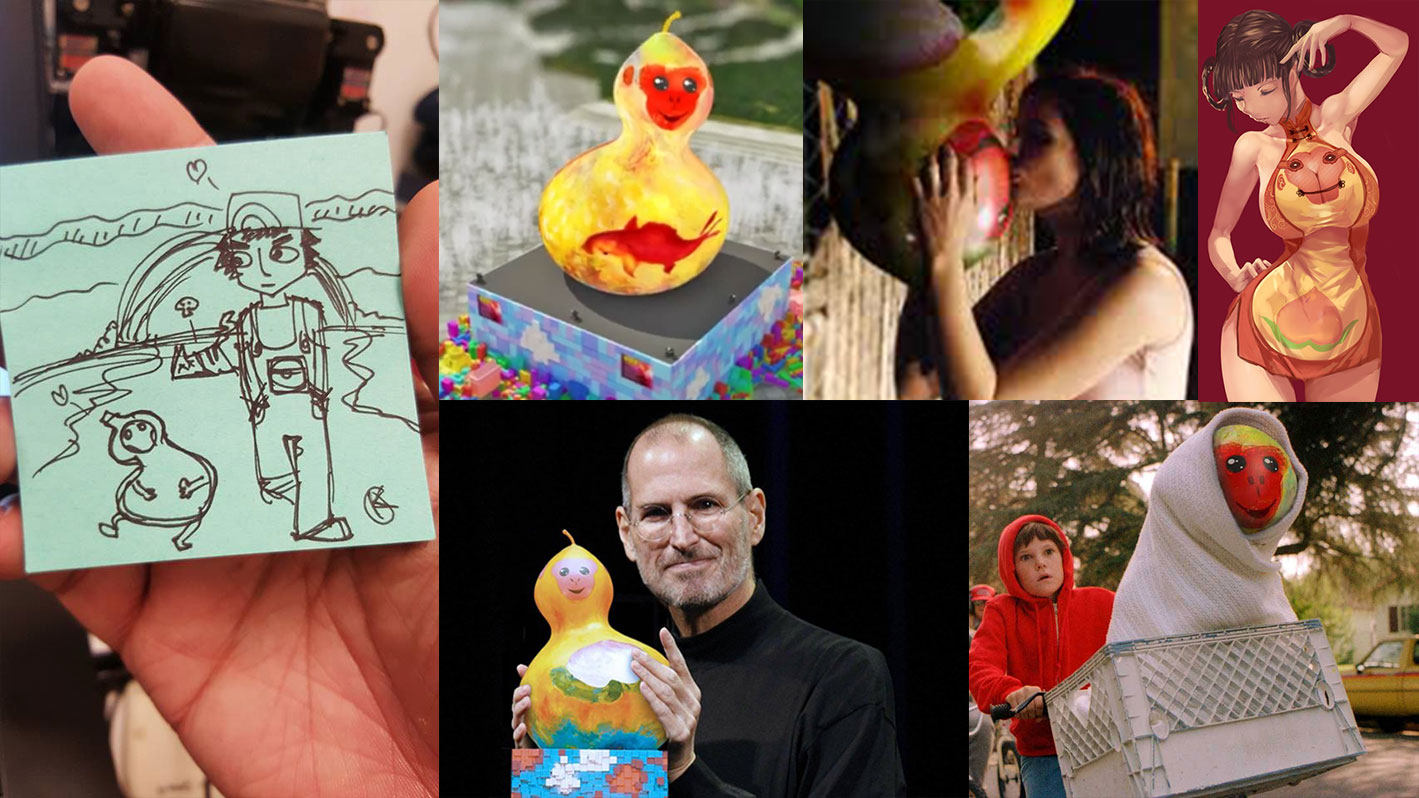
↑ a collage of fan made images involved the Fulu Monkey
However, Fulu Monkey, the name of the main lantern character, has raised from the negative energy and become a star. When I saw it for the first time, I thought, design wise, it might fail as a main lantern piece for the festival, but the character design was interesting. It instantly reminded me Pokemon, and I finally found some time to put together this small Google Carboard experience that let players battle Fulu Monkey from the point of view of Pikachu. This is not a complete game, and it doesn’t have an ending to it. You can zap Fulu Monkey to your heart’s content in this little play experience. So have fun!
Made with Unity 3D and Google Cardboard. Ash 3D model is originally made by MMDSATOSHI for MMD. I ported it into Unity 3D and applied free mecanim animations on it. I built Fulu Monkey myself with simple blendshapes motions. Background music is from Pokemon X/Y. The forest is from the Unity asset store. This is a personal project as a prove of concept, not meant for commercial use. You will need a Google Cardboard to fully enjoy the VR experience.
Zap play footage:
https://www.facebook.com/kanyangli/videos/10153905008883745/
Download the VR Pokemon Battle: Wild Fulu Monkey Android Apk here:
https://goo.gl/ACxZAb

MR Mechanic Study: DIY VR Cardboard Experiment
I am experimenting with designing my own Google Cardboard, and possibly using for BFADT promotion. I need a simple, 1-sheet, and custom designed solution for the Google Cardboard, so I can brand it with Parsons BFADT and hand them out at design week. 04/30/2016 This mostly not going to happen, but I will make this anyway into promotional material for our program and the new minor.
Are the optics used in Google Cardboard the same one used in the paper binocular telescope? YES. (objective lens-convex lens) I ordered one and it works perfectly! 3X Magnification, 25 mm Lenses give about 3 inches focal length.
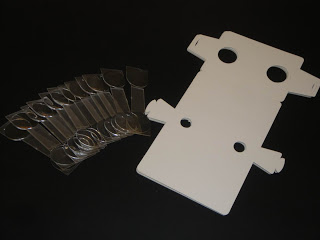
http://kingdarling.blogspot.com/2013/02/3d.html#comment-form
This is a very cheap way to get VR optics, 12 sets for $26 on eBay, could be even cheaper on taobao.com.
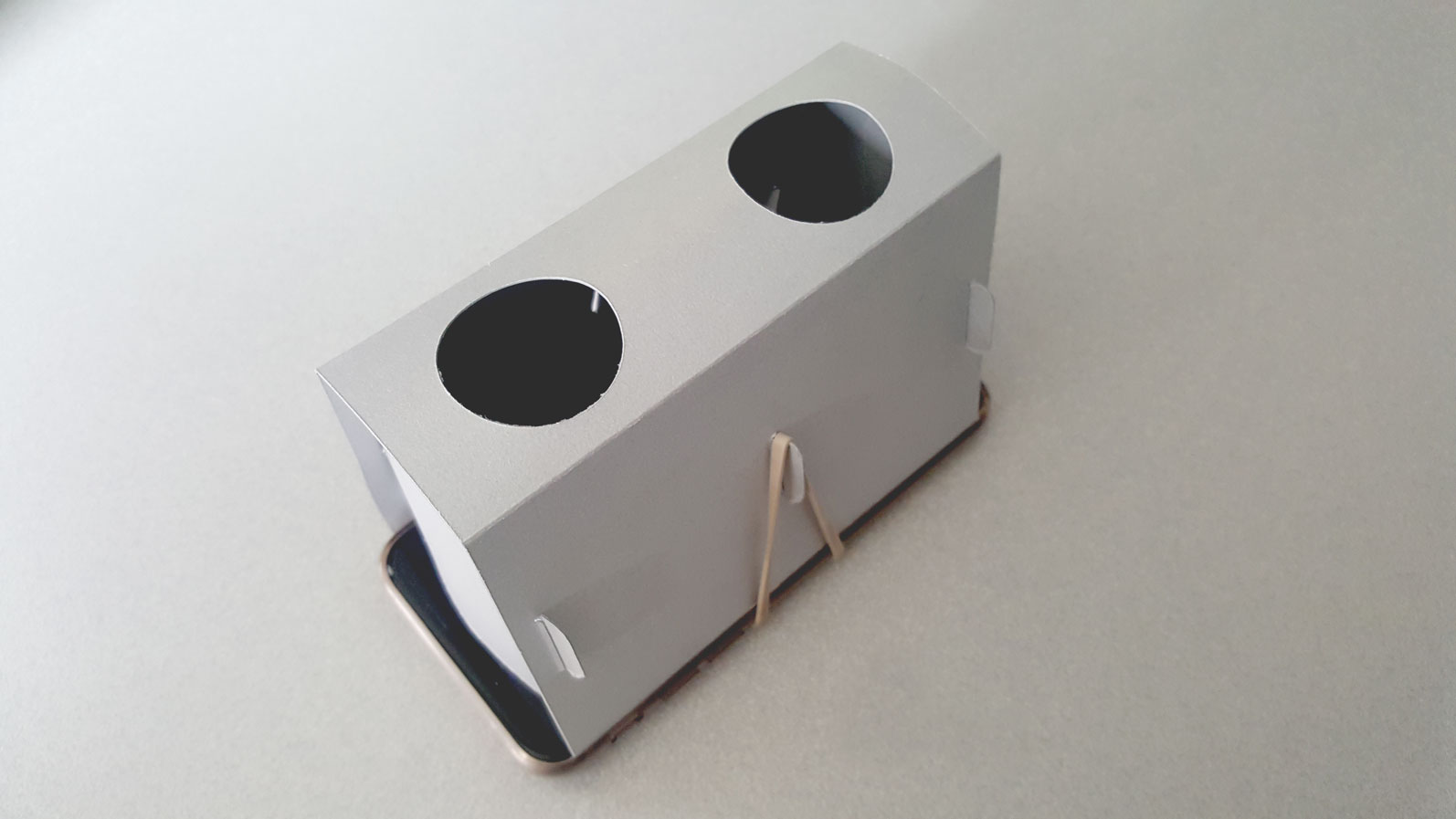
First Attempt:
My first attempt creating a prototype with a sheet of cardstock paper and our newly invested Cricut Air. The template I used is inspired by VRSHEET. I found out about it after reading the magazine バーチャルリアリティで二次元へ行ける本, and love the idea of a 1-sheet VR. The initial experiment was a modification of their sample template with improved support that will lock the phone in place with a rubber band.
* It is not completely cut through with the given setting due to the thickness of the cardstock paper. I am going to try double-cut in my next attempt. Otherwise, with some cleaning up, the quality looks great. Most importantly after putting in the lens, it works beautifully.
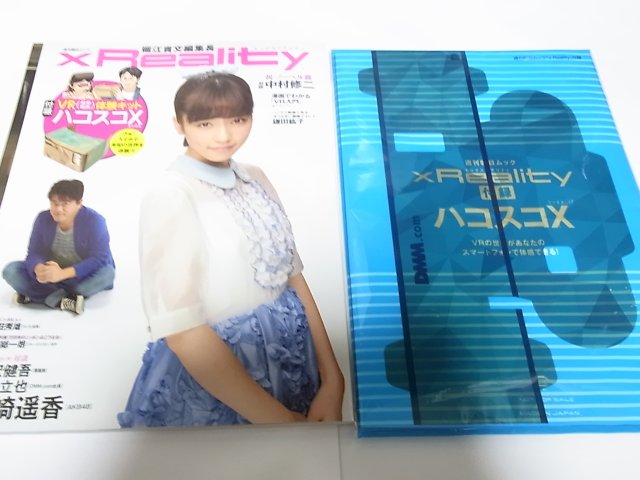
Precedents & Reference:
xReality (週刊朝日Mook)
Monoscopic VR Viewer by ハコスコ:
http://www.amazon.co.jp/dp/4022770236
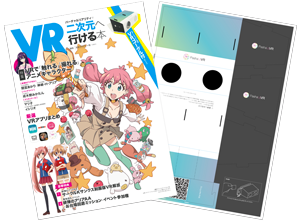
バーチャルリアリティで二次元へ行ける本
1-sheet solution for Google Cardboard, the sheet also include a QR ring:
http://www.amazon.co.jp/dp/4908542007
https://www.cs-reporters.com/vr/pashalovr/

VRSHEET
1-sheet solution for Google Cardboard:
http://snaris.com/vr/vrs.html
http://snaris.com/vr/img/document-vrs.pdf
http://snaris.com/vr/img/vrs/VRS-sample.pdf
Different Google Cardboard Designs:
(Google Cardboard + NFC) Cardboard Object:
[VR] Pokemon Battle: Wild Fusho Monkey
The design of the main lantern of this year’s Taiwan Lantern Festival, Fusho Monkey, has gone viral on Taiwanese social media. The comments are mostly negative due to the weird aesthetic that are drastically different from the previous main lanterns. It was courageous for the designer behind the new lantern to risk for innovation, but it seems like his artist side took over the design process and left the audience stunned with a poorly executed piece that supposed to represent the highest craftsmanship and appreciation for aesthetic in Taiwan.

Fusho Monkey has become the subject of fan arts. When I saw it for the first time, I thought the design failed as a main lantern for the prominent Taiwan Lantern Festival, but the character is interesting. It instantly reminded me of Pokemon, and I finally found some time to put together this small Google Carboard experience that allows players battle Fusho Monkey as Pikachu and Satoshi (Ash). This is not a complete game!! You can zap Fusho Monkey to your heart’s content in this little play.
Made with Unity 3D and Google Cardboard. Ash 3D model is originally made by MMDSATOSHI for MMD and was ported into Unity 3D and applied mecanim animations on it. I built Fusho Monkey myself with simple blendshapes motions. Background music is from Pokemon X/Y. The forest is from the Unity asset store. This is a personal project as a prove of concept, not meant for commercial use. You will need a Google Cardboard to fully enjoy the VR experience.
Download the Android Apk:
![]()
https://goo.gl/ACxZAb
VR Pokemon Battle: Wild Fusho Monkey Screenshots:
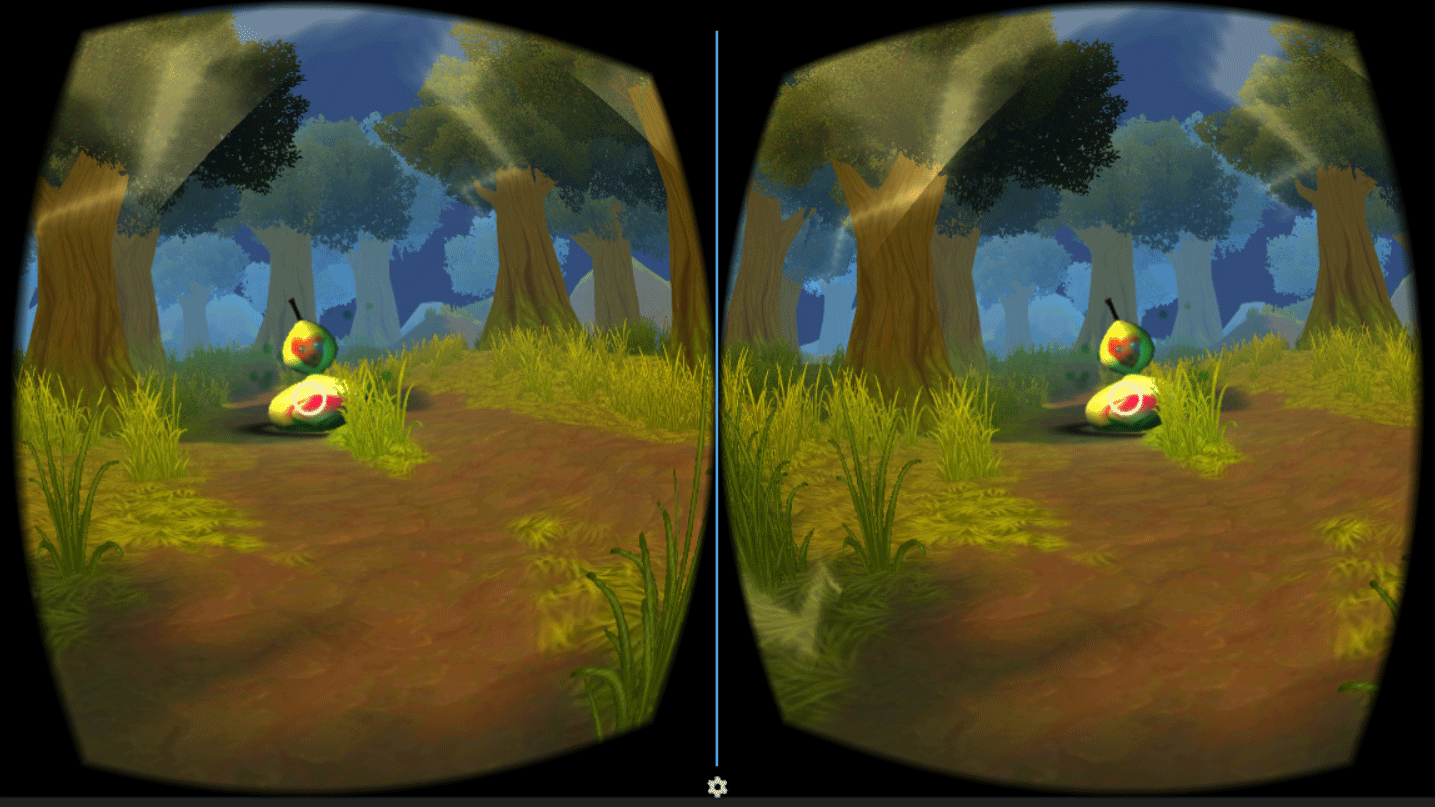

Saint Seiya Eraser Battle Toy X
This vintage eraser figure playset (聖鬥士世紀擂台爭霸戰) brought back a lot of my childhood memories. I used to collect those eraser capsule toys and battle them with my classmates in elementary school. There is a diagram on the right picture above shows how to play the game with robber miniatures. When the play pull the stick, the miniatures also spins. Nintendo Famicom didn’t come out till my 4th grade, so before I went digital I had great fun with these toys. Out of the capsule, Phoenix Ikki is the strongest because of his wide spread tails. However, after people realized the gestures of these eraser toys can be modified with hot water or a lighter, it didn’t matter anymore. Anyway, I’ve been wanted to re-design this playset and print the pieces out with 3D printer.
I try to look for the playset every now and them. I am pretty sure this battle playset is Taiwan only. I have been a faithful Ebay and Japanese Yahoo auction buyer since 2001 and I haven’t seen the Japanese version of this playset. A good friend of mine dug up the above pictures from his archive and gave them to me and that is all I have. During the research, I’ve discovered a few deluxe playsets for Saint Seiya by Bandai and few other DragonBall Z and MEGA Bloks Power Rangers playsets that had adopted the battle mechanism.
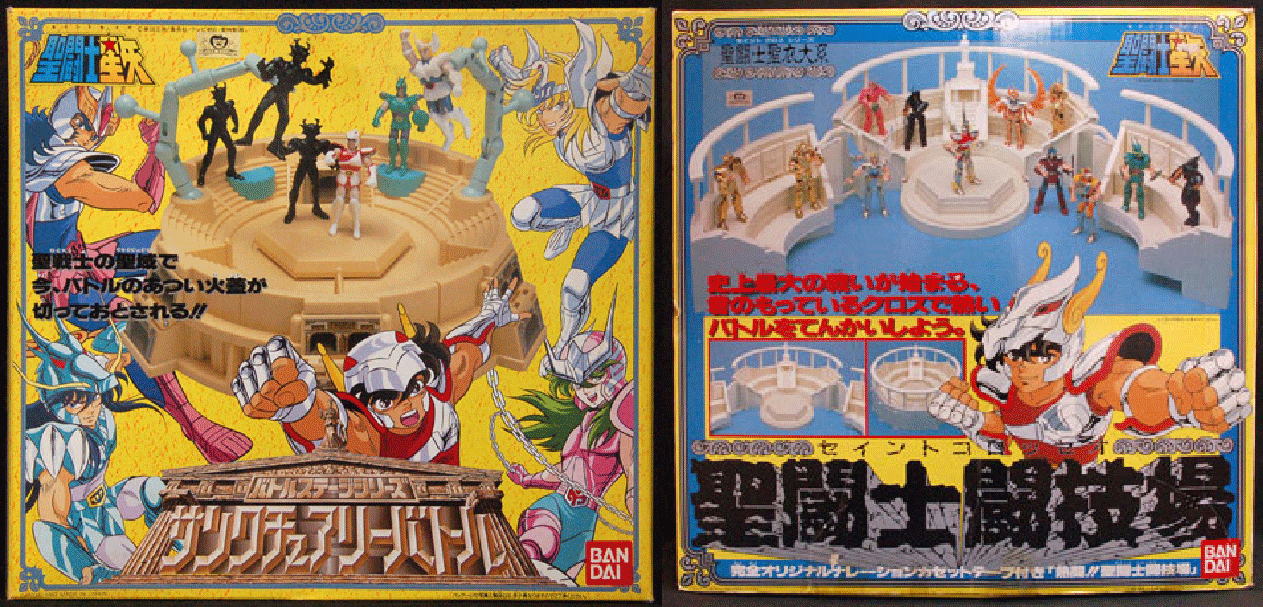
聖闘士星矢 サンクチュアリーバトル バンダイ 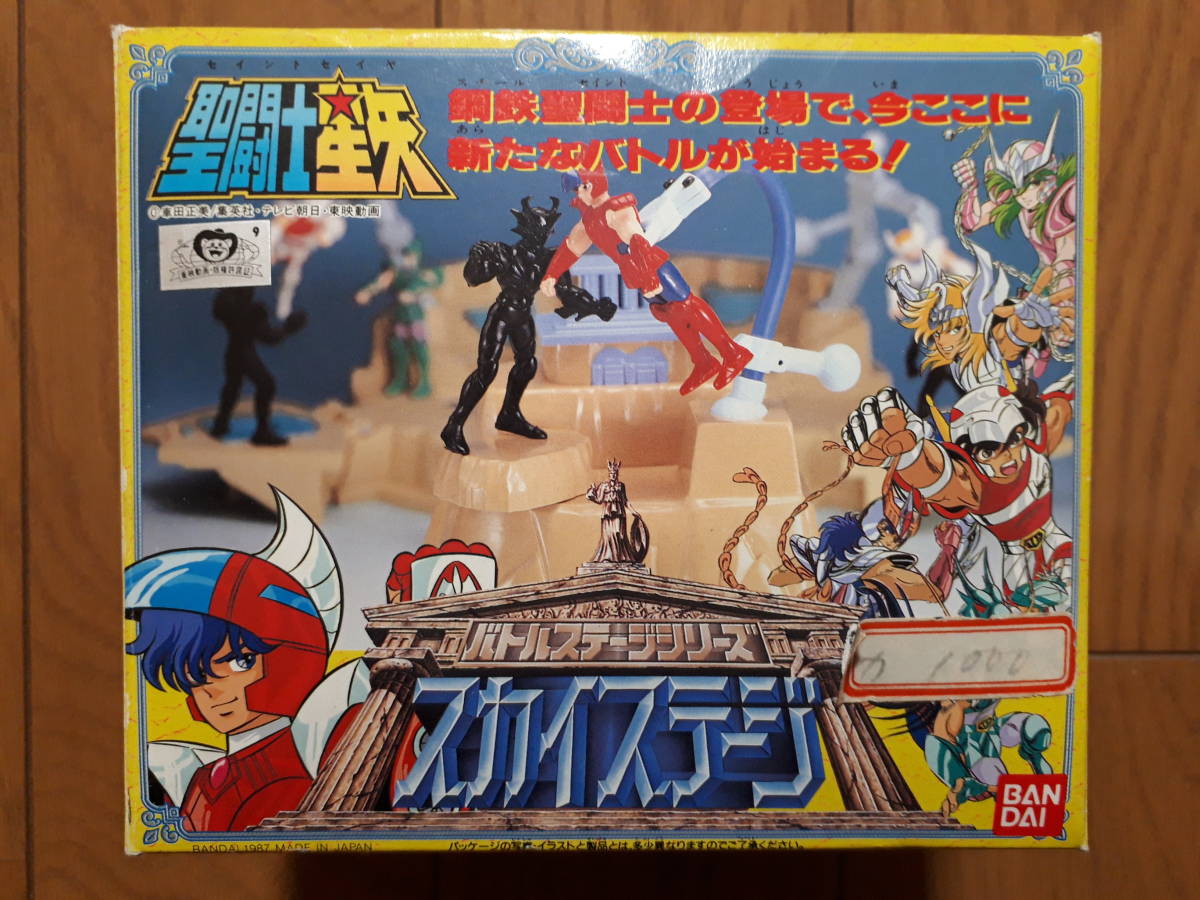
バトルステージシリーズ スカイステージ 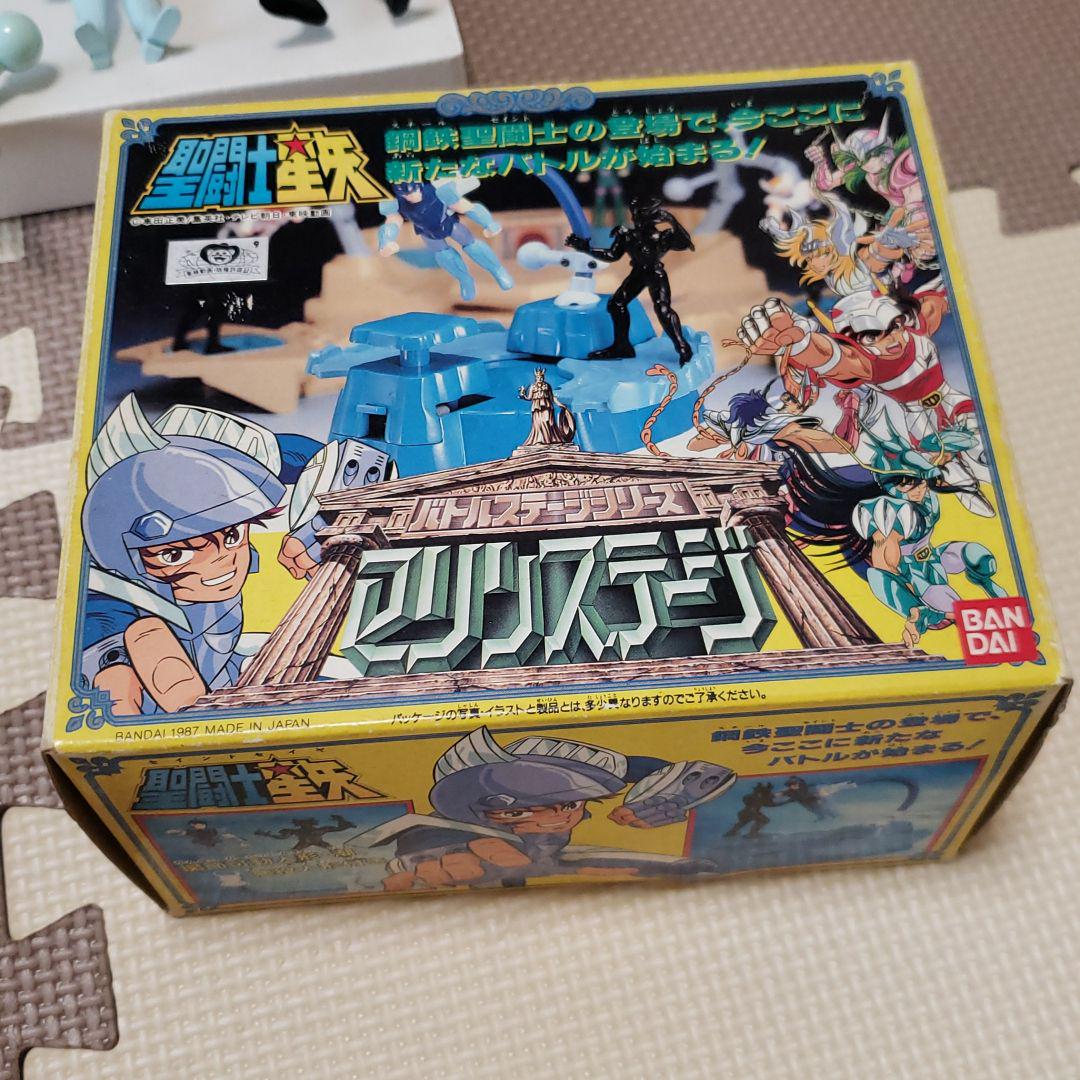
バトルステージシリーズ マリンステージ 
バトルステージシリーズ ランドステージ
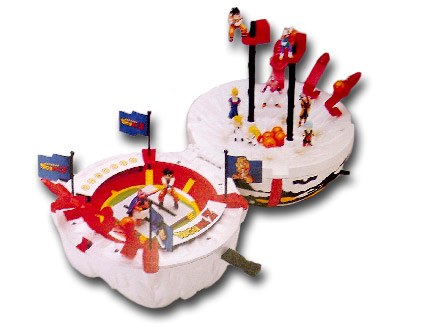
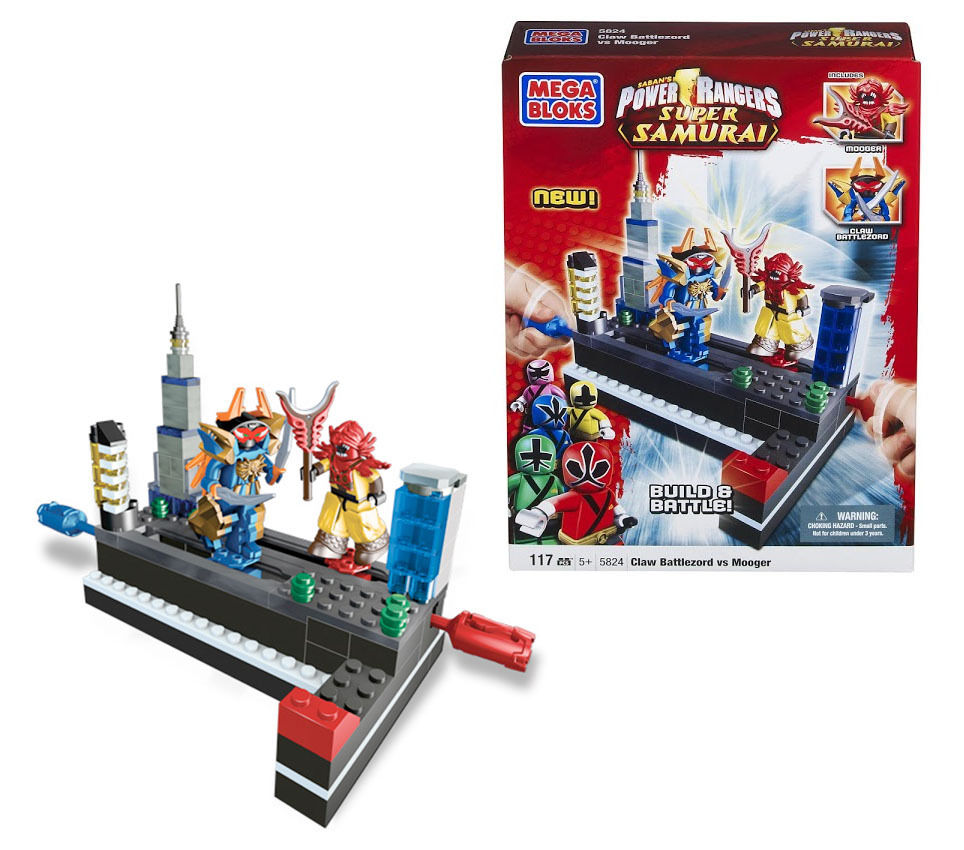
Angery Birds GO! TELEPODS
 Stumbled on this little toy today and was amazed by the nicely designed trophy. When designing modular systems – systems that recognize and identify their detachable parts, always pack all the technologies in the core module and keep the detachable parts minimum to no technology. This toy trophy is not only a status quo, but also a short throw lens and a magnifier. Every vehicle in this game comes with a mini QR code underneath. In order to read the QR code accurately with the built-in camera on iPad, the code has to be held steady at a fix distance using a short throw lens. The trophy was designed to do exactly that and with the clear body, it bought in light for the camera to see better. Very well made, not interested in the game at all.
Stumbled on this little toy today and was amazed by the nicely designed trophy. When designing modular systems – systems that recognize and identify their detachable parts, always pack all the technologies in the core module and keep the detachable parts minimum to no technology. This toy trophy is not only a status quo, but also a short throw lens and a magnifier. Every vehicle in this game comes with a mini QR code underneath. In order to read the QR code accurately with the built-in camera on iPad, the code has to be held steady at a fix distance using a short throw lens. The trophy was designed to do exactly that and with the clear body, it bought in light for the camera to see better. Very well made, not interested in the game at all.
 =====A similar setup was recently used in Pokemon tretta (ポケモントレッタ) lab reader on 3DS. It was mind-bottling why this 3DS scanner accessory came out with a low and reasonable price tag. Then I realized all the reader has inside was a set lens, mirrors, LEDs, and on/off switches, there was no scanner circuit nor serial port at all. It took the advantage of the dual cameras on 3DS to read the hidden barcode on the tretta chip. Brilliant!
=====A similar setup was recently used in Pokemon tretta (ポケモントレッタ) lab reader on 3DS. It was mind-bottling why this 3DS scanner accessory came out with a low and reasonable price tag. Then I realized all the reader has inside was a set lens, mirrors, LEDs, and on/off switches, there was no scanner circuit nor serial port at all. It took the advantage of the dual cameras on 3DS to read the hidden barcode on the tretta chip. Brilliant!
SDガンダム外伝III&IV
LSIスーパーボイスアドベンチャー バーサル騎士!勇者伝説
